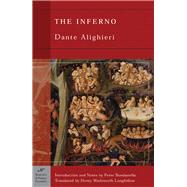From Peter Bondanella's Introduction to The Inferno
Church doctrine in Dante’s time (as today) holds that Hell’s function is to punish for eternity human souls who died in mortal sin without a sincere confession of their faults that expresses repentance for their misdeeds. These miscreants do not qualify for the purifying punishments of Purgatory, where souls who do not die in mortal sin escape eternal damnation and suffer temporary expiation before receiving their blissful reward in Paradise. When Dante began his poem, he was certainly aware of biblical and classical views of the afterlife. In the Sheol of the Hebrew Old Testament and the Hades of classical antiquity, souls after death did not really receive retribution for their earthly sins or particularly attractive rewards for their earthly merits. But the Christian church, affirmed by the theology of such major writers as Augustine and Thomas Aquinas, conceived of Hell as a place where the good were separated from the evil, and deeds on earth were weighted and judged. Dante’s famous notice over the gate of Hell underlines the eternity of Hell’s punishment (“All hope abandon, ye who enter in!”), but it is also clear from a reading of the entire poem that Dante considers the greatest punishment possible to be not the incredibly original and grotesque physical punishments he invents for his work but, instead, the eternal loss of communion with God that is enjoyed by the blessed.
Dante’s poetic genius partly resides in his many ingenious inventions for the shape and character of Hell. Dante’s Inferno is a hollow cone shaped by the displaced territory after Lucifer’s expulsion from Heaven and fall to Earth. It is situated under Jerusalem and consists of nine concentric circles that grow ever smaller and house more and more evil sinners. Ultimately, Hell ends at Earth’s core, where Lucifer is imprisoned in ice. Contrary to popular opinion, fire and brimstone are not the typical infernal punishments, although they are present. The place is filled with a number of rivers, swamps, deserts, a burning plain, a huge waterfall, a frozen lake, the towers of the City of Dis, and the ditches and bridges of Malebolge (ten sections of a circle shaped like ditches, pouches, or purses). Because the science of Dante’s day followed the Ptolemaic system of the universe in astronomy and Aristotle’s teachings on physics and biology, Dante considered Hell to be in the center of Earth, which in turn was in the center of the universe, with the sun revolving around it. A great chain of being extended from gross matter, animals, and humanity to the nine orders of the angels, and then to God in the Empyrean Heaven. Dante’s Inferno generally reflects traditional medieval thinking on astronomy and science, but the poet is also capable of enriching this tradition with his own ideas to enliven his picture of the Other World.
The most important rule in the Inferno, as well as in Purgatory and Paradise, is that Dante makes the rules. Laws can be broken or twisted to suit his poetic purposes, but they are always his alone. Such inventive details, often created by the author out of whole cloth, provide the reader with a rich, textured world of real individuals and a universe with its own specifically Dantesque regulations and customs. In many respects, Dante’s Inferno is not an unfamiliar place. Its most interesting inhabitants are not classical monsters, mythological figures, or heroes but instead are contemporary Italians, figures from all over the peninsula. It is an all too human world that we all immediately recognize as the one in which we live. Jean-Paul Sartre once wrote that Hell is other people. Dante would have said: “We have met the damned, and they are we.”
Apart from all of the entertaining and ingenious “house rules” in Hell that Dante invented, one of the great intellectual achievements of Dante’s Inferno as a work of art is its original synthesis of the Christian and the classical worlds in Hell’s organization. For example, the idea of a visit to the Underworld was suggested to Dante by the obvious example of Virgil’s Aeneid. Since Virgil had been to Hell before, who else would be more qualified to guide an Italian poet who loved Virgil’s epic work on another journey through the same territory? Numerous specific physical punishments in Hell require guardians or bureaucrats (not to mention torturers enjoying their work), just as a prison requires jailors and executioners. Thus Dante employs a wide variety of classical figures to serve in this capacity, including Charon, Minos, and the centaurs. The rivers of Hell are those of classical antiquity (such as Acheron, Styx, Phlegethon, and Lethe). Numerous classical figures, such as Alexander the Great, Brutus, Cassius, and Ulysses, appear in the various circles in which they suffer eternal damnation along with Dante’s contemporaries. No more heuristic juxtaposition of ancient and modern, classical and contemporary, will occur in Western literature until the sixteenth-century appearance of The Prince and the Discourses on Livy, two books by Niccolò Machiavelli that effect a similar synthesis by founding a new realistic view of politics upon comparative analyses of ancient Romans and contemporary Italy or Europe.
